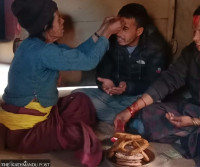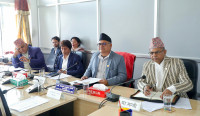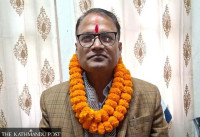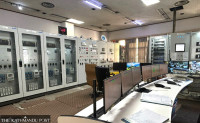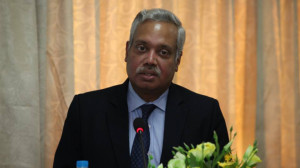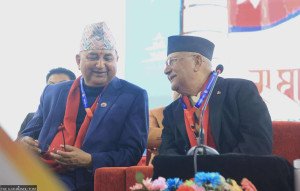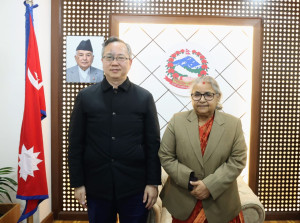National
What kind of president did the new republic imagine?
President Bidya Devi Bhandari’s recent political activism has trained the focus on the roles and responsibilities of the institution she represents.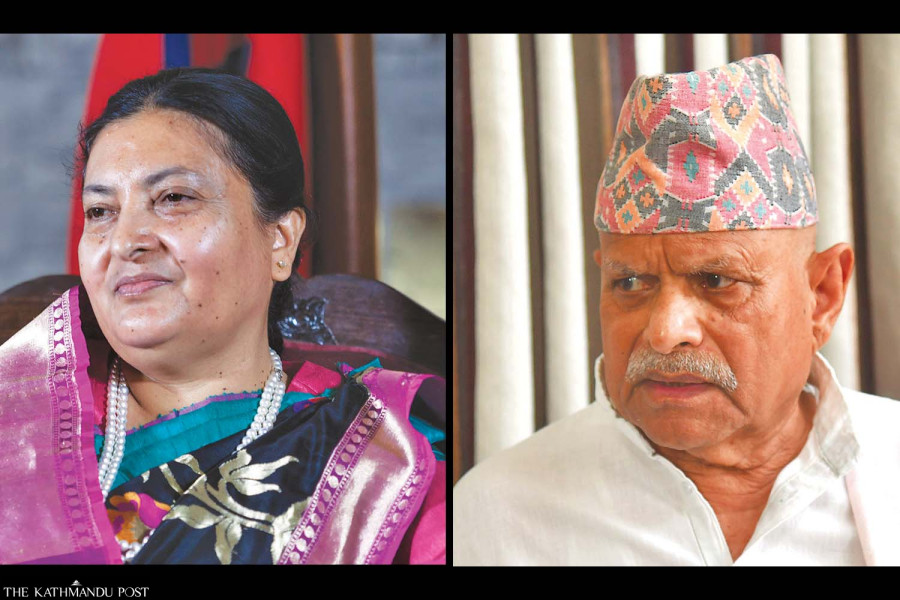
Tika R Pradhan
President Bidya Devi Bhandari’s refusal to authenticate the bill to amend the Citizenship Act has sparked a heated debate on the role and jurisdiction of Nepal’s head of state.
This is probably the second time the issue of the President’s jurisdiction has been debated with this level of seriousness after the country became a republic.
It was in 2009 that the issue first entered raucous debate when the then President Ram Baran Yadav stalled then prime minister Pushpa Kamal Dahal’s decision to sack the army chief.
After 13 years of the first incident, President Bhandari, who succeeded Yadav, has courted controversy by not authenticating the bill which was twice endorsed by the two houses of the federal parliament. Her move has been widely criticised as an act of blatant violation of the constitution.
Legal and political pundits described it as going beyond the jurisdiction of a constitutional president and trying to exercise executive rights against the spirit of the current constitution.
But what kind of President did the shapers of the post-2006 political order have in mind?
Constitutional experts say the current constitution has clear provisions of a constitutional President without executive powers, which is vested on the council of ministers headed by a prime minister.
“But the President has breached her constitutional role and tried to act like an executive President by undercutting the federal parliament,” said senior advocate Chandra Kanta Gyawali, a constitutional expert. “Bhandari’s act has created such an environment that many now feel there is no point in the parliament passing bills as the President can always refuse to authenticate them. She does not seem to accept the sovereign parliament’s supremacy.”
The 2015 constitution has described the President as the custodian of the charter; it has not envisioned the scenario of the President exercising an executive role.
“Now, the custodians of the constitution are themselves violating it in an attempt to derail the achievements of the people’s movements. This is how regressive forces are coming to the surface,” said Pushpa Kamal Dahal, chairman of CPN (Maoist Center), while addressing a function on Friday. “We can defeat such ploys only through a struggle. If we don’t take to the streets, regressive forces may besiege the system.”
However, UML leaders have defended the President’s move, arguing that one action should not be used to pass judgement on her presidency.
“Ram Baran Yadav’s decision to reverse the sacking of the army chief could also be taken as a serious breach of constitution as there was no constitutional provision to block the decision of the council of ministers headed by an executive prime minister,” said UML leader Rewati Raman Bhandari, who was involved in the constitution-making process and drafting various other laws as a Constituent Assembly member. However, his party, the UML, had supported the then president Yadav’s move to stall the prime minister’s decision to sack the army chief.
Bhandari claimed that the present president’s refusal to authenticate the citizenship bill fell in a grey area. “The constitution is silent on what happens if the President does not authenticate the bill,” Bhandari, a lawyer-turned UML leader, argued.
Constitutional expert Gyawali, however, didn’t buy this argument.
Gyawali said the then president Yadav stopping the executive prime minister from sacking the army chief was not unconstitutional because the then prime minister Pushpa Kamal Dahal’s decision to sack the army chief was a breach of the constitution too.
Bhandari argued that the meaning of having no clear constitutional provision as to what happens if the President does not authenticate a bill is that the constitution gives some powers to the President in such a situation.
But many other constitutional experts said the President does not have the kind of authority that the previous constitutional king used to enjoy. Also, some experts have tried to compare some decisions of the two presidents, with similar decisions of past kings as heads of state.
“The constitution of 1990 had given more power to the constitutional king; the king was allowed to appoint employees at the palace and announce heirs themselves,” said constitutional expert Radheshyam Adhikari, a Nepali Congress leader and former member of the upper house. “But the new constitution has cut out all such powers and imagined a constitutional President, who is a bit more powerful compared to a purely ceremonial president.”
The constitution gave some powers to the President such as to send back bills to parliament for reconsideration, declare a state of emergency and play a role in forming governments in the absence of parliament, the two-time Constituent Assembly member Adhikari told the Post. “But we had certainly not imagined an active President.”
Some observers argued that Nepal abolished centuries-old active monarchy with absolute powers even after it morphed into constitutional monarchy in 1990, suggesting that Nepali people wanted neither an active king nor an active president.
“The most important thing is what our constitution says about the role of the President. And, it has not imagined any role except authenticating the decisions of the government and parliament,” said Bhojraj Pokharel, former chief election commissioner.
But the problem is that both the presidents (Yadav and Bhandari) tried to play executive roles by going beyond their jurisdiction, Pokharel explained.
Observers also feared that such controversial roles of the presidents may embolden pro-monarchy forces who argue that the monarchical system was better.
Following these disputes, a debate has started about the presidents’ lifelong political affiliations informing their activism.
Some are for considering the option of a non-partisan President.
The constitution detaches the President from past affiliations so as to help the person stay above partisan interests and maintain the institution’s sanctity.
Article 62(6) of the constitution states that if a person who holds a political office to be filled by way of election, nomination or appointment is appointed as the President under the Article, his or her such office shall ipso facto be vacant. In accordance with this provision, both Yadav and Bhandari had resigned as members of parliament immediately after they were elected to the highest position.
As of now all the presidents and vice-presidents, except one, have come from active political backgrounds.
The first President of the republican Nepal Dr Yadav was joint general secretary of Nepali Congress while Bhandari was vice-chair of CPN-UML. Present vice-president Nanda Bahadur Pun was the senior leader of the CPN (Maoist Centre) and former deputy commander of the Maoist army.
The first vice-president Paramananda Jha was a former judge of the Supreme Court.
Instead of finding a non-partisan renowned figure for President, the parties see it as just another post to accommodate their leaders who can be relied upon to decide in their favour should the need arise.
“Actually, the person appointed as the President should be free of biases but that could not happen in Nepal,” Pokharel told the Post. “Therein lies the problem. It’s up to political parties to nominate a person who can rise above partisan interests – and in favour of national interest.”
The problem we have in Nepal is that those holding important positions, instead of learning from the mistakes of their predecessors, rather look to justify their action based on what their predecessors did, Pokharel said. “This is unfortunate for the country, for the system and the institution of the president.”
Yadav and Bhandari served under two different constitutions. Yadav became president as per the interim constitution of 2007 while Bhandari took office under the existing statute. Former justice of the Supreme Court Balaram KC said there was no significant difference in the powers given to the President under the two constitutions as both imagined ‘ceremonial’ Presidents.




 12.12°C Kathmandu
12.12°C Kathmandu

